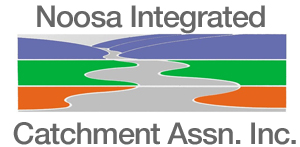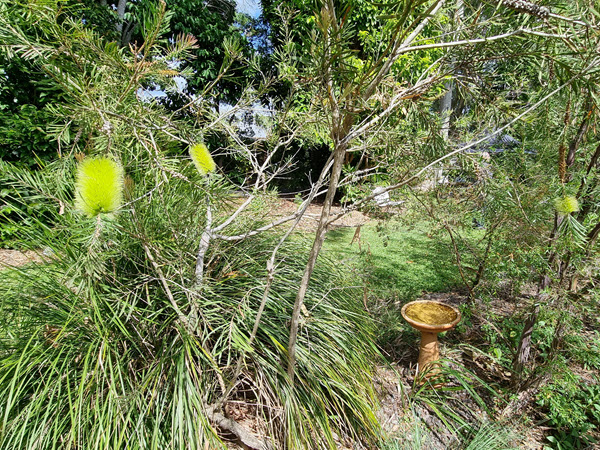What a pleasure it was to walk around Robert and Linda’s beautiful half acre urban wildlife garden.
Robert chatted about the decisions and compromises they have made to get the balance right between planning areas of aesthetic beauty, providing shelter and food for wildlife and including utility spaces for plant propagation and food production.
There were many decisions to be made when they first moved to the block 35 years ago such as where to position the house and which existing trees and other plants to keep. Their decision to keep as many of the original native trees as possible has resulted in beautiful garden with magnificent blue gums providing the framework for the rest of the garden.
Robert spoke about the importance of considering the existing plants, the soil type, and areas of sun and shade when planning further planting. Rainforest species were planted on richer soil and sun loving natives and bird attracting species on the northern side of the house. Shade tolerant species were introduced under the blue gums including some aesthetically pleasing non weedy exotics. This area was potentially dry so was left un-mowed which also allowed some natural regeneration.
Robert admitted to some mistakes such as planting a Grevillea baileyana, a northern Queensland species, which can become weedy in certain areas of the Sunshine Coast. Other plants did not survive and some were lost in storms but this provided opportunities to experiment with alternative species.
The utility areas of the garden included a propagating space and a garden for vegetables and fruit trees. The original peaty, alluvial sandy soil has been enriched after years of adding compost. The driveway was also designed carefully with gravel used to allow the soil to breathe and water to spread out rather than channel.
The careful planning of Robert and Linda’s garden has made it a haven for a variety of wildlife. The blue gums provide habitat for a variety of birds, insects and even koalas. Other areas have been designed to provide dense cover for small birds by adding white sand and mulching with gravel which is good for the germination of dry heath plants. Specific species have been planted to provide habitat for insects, such as Xylosma which is important for Bordered Rustic Butterfly breeding.
Robert commented that having a wide variety of plants useful to birds and animals as a food source, also helped to protect their own food plants by distracting wildlife with plenty of alternatives.
Many thanks to Robert and Linda for hosting this month’s workshop. It was such an enjoyable morning in their beautiful garden that many of the attendees lingered long after the official end of the open garden visit.











